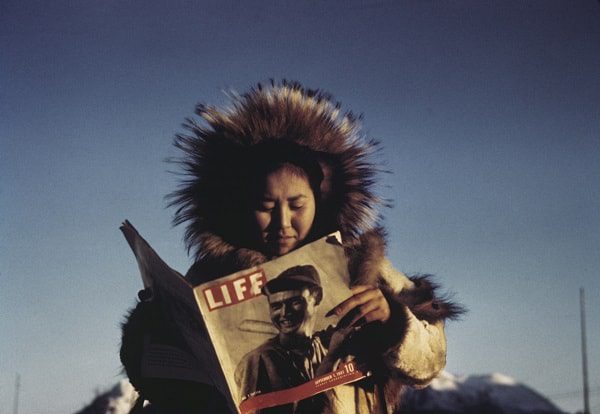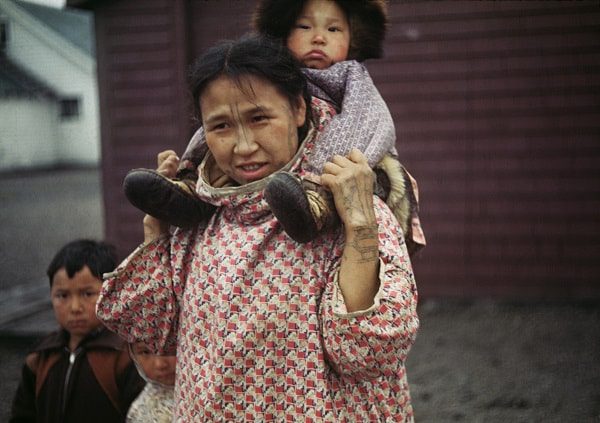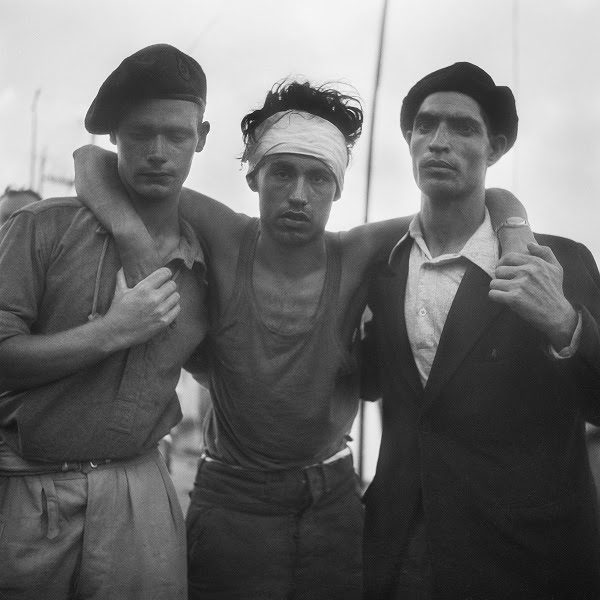October 16 through January 7 for Art Basel Season at the Jewish Museum of Florida-FIU in Miami Beach

The Jewish Museum of Florida-FIU presents the southeastern U.S. premiere of Ruth Gruber: Photojournalist. Headlining Art Basel season in Miami Beach, the new exhibition celebrates the remarkable life, vision, and heroic tenacity of this twentieth-century pioneer and trailblazer. Once the world’s youngest PhD, Ruth Gruber passed away recently at the age of 105. The show features more than 60 photographs including gelatin silver prints plus an archival trove of personal letters, telegrams, printed magazines, and assorted ephemera documenting the artist’s career. The photographs in this exhibition span more than fifty years, from Gruber’s groundbreaking reportage of the Soviet Arctic in the 1930s and iconic images of Jewish refugees from the ship Exodus 1947, to her later photographs of Ethiopian Jews in the midst of civil war in the 1980s.
A selection of Gruber’s vintage prints, never before exhibited, will be presented alongside contemporary prints made from her original negatives. This exhibition is on loan from the International Center for Photography (ICP) in New York, is drawn from Gruber’s private archive, and was organized by ICP Curator Maya Benton. The Miami persentation is organized by Jackie Goldstein, Curator of the Jewish Museum of Florida-FIU. The opening reception is free to Members of the museum (non-members pay $18), on Monday, October 16 at 7:00 p.m. and will include a free screening of the film Ahead of Time, about Ruth Gruber’s life. The museum is located at 301 Washington Avenue, in the heart of Miami Beach’s historic Art Deco District.

Gruber was the author of twenty books and is the recipient of ICP’s 2011 Infinity Awards Cornell Capa Award. Her reportage and photojournalism acted as both advocate and witness for her subjects throughout her long career.

Ruth Gruber: Photojournalist will celebrate one of the twentieth century’s great humanitarians and photojournalists.
“These messages of hope and of living with a heroic purpose to make a difference ring true in today’s world, and align powerfully with the mission of the Jewish Museum of Florida-FIU,” said the Museum Director, Susan Gladstone. “We are thrilled to bring this epic story of Ruth Gruber’s life and photos to Miami Beach during Art Basel season.”
Watch the trailer for the film “Ahead of Time” about Ruth Gruber’s life:
Milestones of Ruth Gruber’s Life
The Soviet Arctic (1934-35)
As the first correspondent granted permission to travel throughout the Soviet Arctic and Siberian gulag (1934–35), Gruber documented frontier life in the Arctic and the unique role of women in the establishment of northern towns and ports. Vintage photographs represent her earliest use of the camera as a component of her reportage, and trace the exploration and settlement of the world’s northernmost frontier and the development of the Soviet Arctic.
The Alaskan Frontier (1941)
Gruber was thirty years old and already a celebrated author, lecturer, and intrepid reporter when, in 1941, U.S. Secretary of the Interior Harold L. Ickes appointed her Field Representative to the Alaska Territory. Gruber traveled throughout the Alaskan frontier, an enormous and largely unknown expanse, and established herself as a serious photographer.
She sent reports to the Department of the Interior on Alaska’s vast natural resources, railway and air routes, opportunities for homesteading, lives and customs of the native Eskimo people, conditions and experiences of American soldiers stationed there, and suggested ways to open up the territory. Ruth Gruber, Photojournalist will include color prints made from her original Alaska slides, 1941–43, printed for the first time, as well as never before-seen motion picture footage.
A Champion for Jewish Refugees (1944-47)
In 1944, Gruber was assigned a secret mission to bring nearly 1,000 Jewish refugees from Europe to the U.S. Born in Brooklyn to Jewish immigrants, Gruber accepted the assignment despite the obvious danger it presented. She was appointed as a U.S. Army General for the ship Henry Gibbins, stewarding the ship and its 1,000 refugees to American shores.
From that moment on, Gruber’s life and work were inextricably bound to the lives of refugees and dedicated to rescue, sanctuary, and liberation. Her tools were her boundless tenacity, empathy, razor-sharp intellect, a Hermes typewriter, and hercamera.
Gruber covered the activities of the Anglo-American Committee of Inquiry on Palestine, and photographed the displaced persons’ camps of Europe and the desolate internment camps of Cyprus, witnessing the desperate plight of Jewish refugees.
In 1947, she documented the harrowing voyage of the ship Exodus 1947, carrying Jewish refugees attempting to break the blockade on Jewish immigration to Palestine. It was intercepted by the British near Haifa port, and its 4,500 Jewish passengers, most of them Holocaust survivors, were forced onto three prison ships and sent back to Europe.
Gruber alone smuggled a camera aboard one of the three prison ships, Runnymede Park, and documented the horrible conditions she witnessed. Her photographs, taken surreptitiously in only a few short hours, were sent out to wire services throughout the world and radically transformed international attitudes toward the plight of Jewish refugees after the war. Gruber’s iconic images, printed for this exhibition from her original negatives, will be displayed alongside vintage prints.
In the following decades, Gruber documented successive waves of migrants from Yemen, Iraq, Romania, Morocco, Tunisia, and Ethiopia, photographing often perilous journeys of emigration, small Jewish villages in North Africa, and the establishment of new lives in Israel.
In Miami Beach, this exhibition was made possible with the support of a grant from the Funding Art Network to the Jewish Museum of Florida-FIU. The ICP acknowledges the support of friends of Ruth Gruber, and public funds from the New York City Department of Cultural Affairs in partnership with the City Council.












